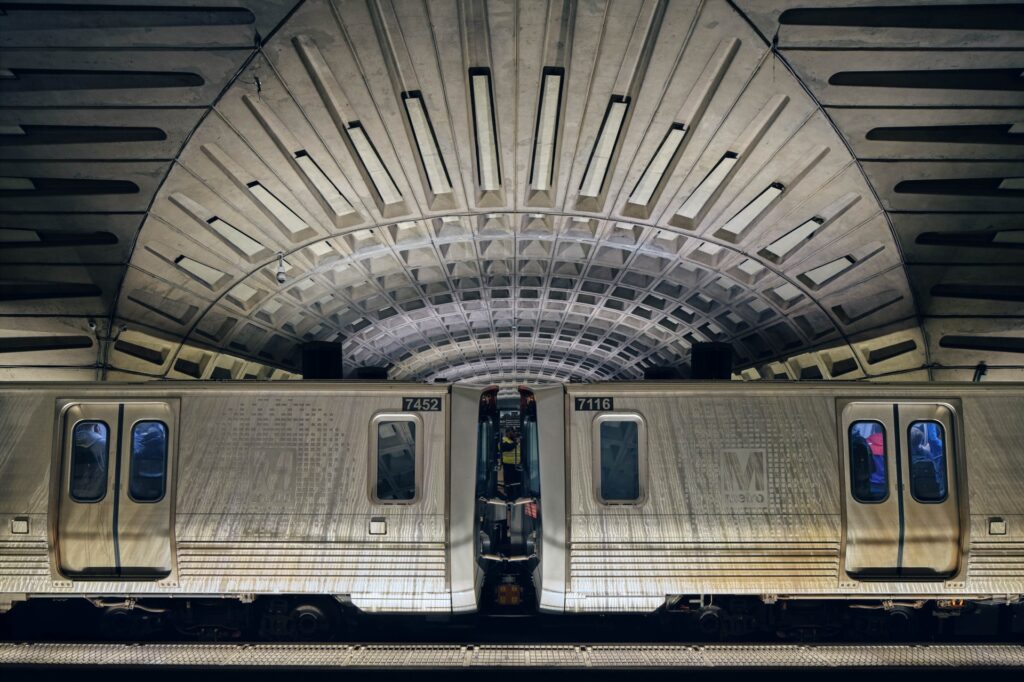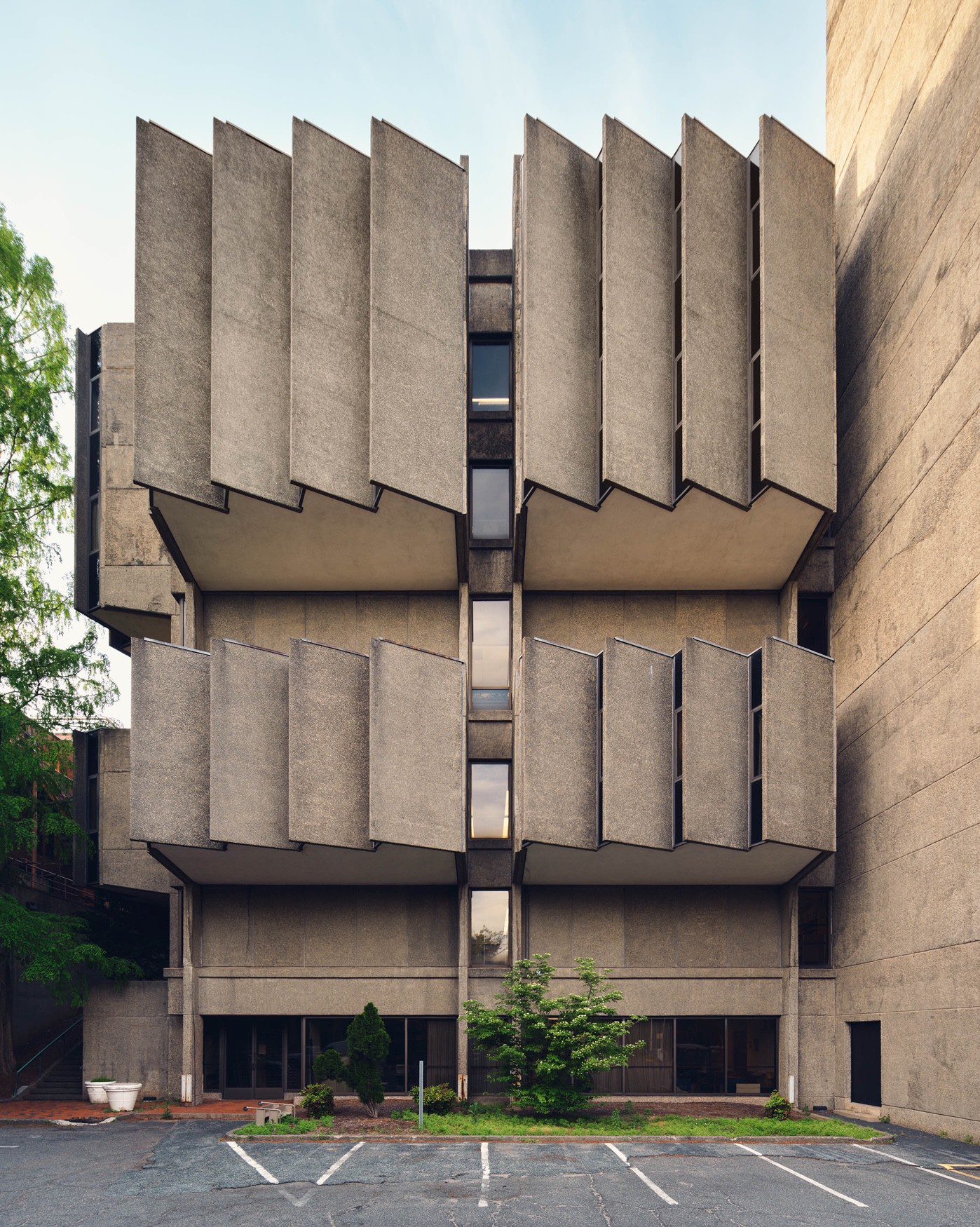Building Museum Tackles Brutalism
By • August 15, 2024 0 1842

Brutalism, which flourished for about 25 years — from the early 1950s to the mid-1970s — is the architectural style that people love to hate.
Labeling it Cold War architecture did it no favors, but one gets the point. Brutalist buildings tend to be massive, with a belligerent aura. Their surfaces are often so rough that if you brush against a wall you may need to see a nurse or a tailor.
Worst of all, the steel-reinforced, cast-in-place, unfinished concrete (béton brut in French, a source of the name) of which most are built has aged unattractively, becoming streaked with rust, grime and mold.
The result? We are losing them. Besides being targeted for scorn, Brutalist buildings are difficult to adaptively reuse and until recently weren’t old enough for historic designation.
On the other hand, these heavyweights are a challenge to demolish. Michael McKinnell, who with Gerhard Kallmann designed Boston City Hall in the 1960s, famously quoted engineer Bill LeMessurier as saying: “It will take a controlled nuclear device to get rid of this building.”
D.C.’s candidate for America’s Ugliest Building and (hopefully non-nuclear) demolition: the J. Edgar Hoover Building, into which the FBI moved in 1974-75 after a long and tortured design process. The Hoover Building, designed by Stanislaw Z. Gladych of Charles F. Murphy and Associates, is one of eight case studies of Washington Brutalism featured in an exhibition at the National Building Museum. (One could argue that Montgomery C. Meigs designed the museum’s home, the former Pension Building at 401 F St. NW, in a kind of Victorian Brutalist style.)
A collaboration with the Southern Utah Museum of Art, “Capital Brutalism” was co-curated by Dr. Angela Person, associate professor of architecture at the University of Oklahoma, and L.A.-based architectural photographer Ty Cole. As part of the exhibition, on view through Feb. 17, a half-dozen leading architecture firms, along with students from the School of Architecture at the University of Nevada, Las Vegas, were asked to reimagine selected buildings.
“Capital Brutalism” uses documents, drawings, models and photographs to go behind the béton-brut (mostly) facades of: the Hoover Building; the Marcel Breuer-designed headquarters of the Departments of Housing and Urban Development and Health, Education and Welfare; the headquarters of the Department of Energy, designed as a L’Enfant Plaza gateway by a three-firm joint venture (Curtis & Davis, Fordyce and Hamby Associates and Frank Grad & Sons, led by David R. Dibner); the Hirshhorn Museum, designed by Gordon Bunshaft, whose stark sculpture garden is currently closed for a “revitalization” by Hiroshi Sugimoto; Georgetown University’s Lauinger Library, designed by John Carl Warnecke; and, least brutal of all, the Euram Building, which elegantly echoes its Dupont Circle neighbors, as designed for the European Academy of Management by Hartman-Cox.
On Thursday, Aug. 22, in conjunction with “Capital Brutalism,” the Building Museum will hold “a punk-themed night.” From 7 to 9 p.m., attendees can tour the exhibition. Then, from 9 to 10 p.m., there will be a live performance by D.C.-based hardcore punk band Scream. Admission is $20 ($10 for students), with craft beer, cocktails and snacks available for purchase in the Great Hall.

Georgetown University’s Lauinger Library. Photo by Ty Cole. Courtesy National Building Museum.
It must have been hard to edit down the list of “polarizing” Brutalist buildings to seven in a city so well endowed with them. In recent years, the style has begun to get some respect again, in D.C. and elsewhere. There is a Brutalism Appreciation Society and a hashtag SOSBrutalism (“Save the Concrete Monsters”). Exhibitions like this one and articles putting the style in a positive light are on the upswing.
Person, co-curator of “Capital Brutalism” commented: “Over time, I’ve come to appreciate what Brutalist architects were trying to accomplish, as well as the potential for adapting these buildings for new uses and to be more comfortable for occupants. The American Institute of Architects is demonstrating this through extensive updating of their own Brutalist headquarters [designed in the early 1970s by the Architects Collaborative to rise behind William Thornton’s Octagon House] in Washington, D.C.”
Yet even in Kelsey Ables’s 2021 guide to D.C.’s Brutalist charms in the Washington Post, she couldn’t resist getting in a few digs: “It would be remiss not to admit that Brutalist structures often conjure the opposite of their utopian ideals. The recessed windows of Georgetown University’s Lauinger Library suggest an interior perfect for someone who wants to slink from sight. The angular shadows of the Hubert H. Humphrey Federal Building evoke narrowed, conniving eyes. And what unspeakable evil might lurk behind the three-foot-thick walls of the Robert C. Weaver Federal Building?”
Never mind Brutalist buildings, though. Washington takes the concrete crown for another work of architecture, the eighth case study in “Capital Brutalism”: Metrorail. Its story was told in detail in “The Great Society Subway: A History of the Washington Metro” by Zachary M. Schrag, published in 2006, the system’s 30th anniversary.
I remember hearing Dr. Schrag, now at George Mason University (researching the Dulles Corridor Metrorail Project), when he spoke about “The Great Society Subway” to a full house at Politics and Prose back then. (Referring to the coffered ceilings and beehive pavement of the Metro stations, one attendee remarked that he always felt like flying up to deposit honey.)
The station design, by Chicago architect Harry Weese — with signage by Massimo Vignelli and “input” by the Commission of Fine Arts, on which Bunshaft and Eero Saarinen’s widow Aline served — began a decade before the first 4.6 miles of the system opened, running from Farragut North to Rhode Island Avenue on the Red Line, on March 27, 1976. The second-busiest rapid transit system in the U.S., Metrorail currently has 98 stations serving six lines traversing 129 miles.
After some years in the shadows (he obviously loved shadows), Weese — whose troubled last years ended with a stroke in a veterans’ hospital in 1998 — has, like Brutalism, been receiving a wave of belated appreciation. A prolific designer, urbanist and preservationist, he is now considered a visionary of 20th-century design.
In a self-deprecating remark, Weese said: “I’m a man 10 years ahead of a time that never comes.” And the Washington Metro, with all that the system, its employees and its riders have been through, remains his aging but ageless masterpiece.

